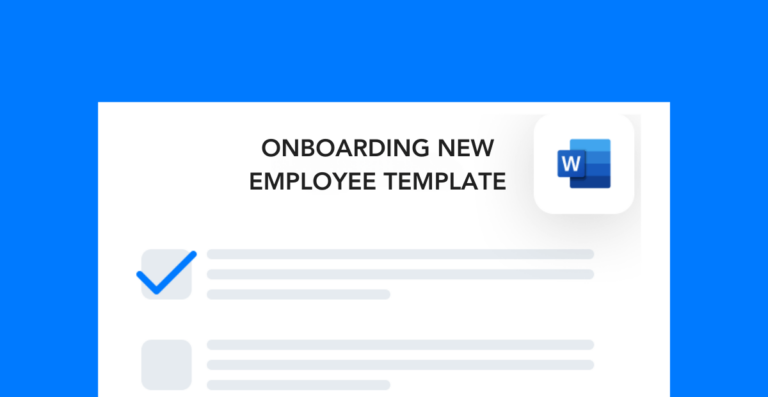When you hire new employees, the first few weeks are critical for retention. A positive experience during onboarding makes workers feel more supported and confident. And that goes a long way for protecting the bottom line.
In fact, high-quality training and professional development are one of top things millennials look for in a potential employer. They want a place to grow and learn, and the majority of workers want to stay for the long haul.
But a great impression is key. To build strong relationships with new employees, you need to show that you’re invested in their success. Start out by following these best practices for onboarding.
Free Template!
Use this employee onboarding template to implement a standard process for your team.
Onboarding Best Practices to Follow
These are general guidelines that you can follow to establish a top-notch onboarding program. But they’re not a comprehensive solution for turnover issues.
If you’re looking to improve employee retention, you’ll have to go beyond just the onboarding process. This will require methods like exit interviewing, employee surveys, and other means of gathering site-specific data.
Adopting these practices is an easy way to start off on the right foot. And with consistent engagement, you should be able to find the most optimal employee retention approach for you.
Focus on the Welcome
Welcoming new employees into your company is an important first step. It’s where you begin to establish a relationship, so the stakes are high.
A solid welcome email should include the following:
- An expression of gratitude and excitement
- Onboarding schedule
- Company handbook (if applicable)
- Onboarding documents
- Important dates and locations for onboarding
You can send this as an all-inclusive email or as a series of emails. Either way, you want to make sure employees have all the essential information before they show up for their first day.
This will help reduce first-day headaches for both the onboarding team and new hires. Plus, it can shorten the entire process, meaning employees can get to work earlier.
Remove Barriers Quickly
During the onboarding process, you want new hires to get comfortable asking for help. When workers are comfortable sharing concerns, your operation is much more likely to succeed. That’s because an open feedback system can help:
- Decrease the likelihood of safety incidents
- Highlight process inefficiencies
- Eliminate quality errors
- Reduce idle time
- Increase transparency
In order to reap these benefits, you’ll need to train managers to remove barriers quickly. If a new hire expresses a problem, it’s important that the person on the receiving end is as helpful as possible in resolving the issue.
Too many barriers within the first few weeks can make new hires second guess taking the position. After all, no one wants to work for a company that doesn’t help with the small stuff. If you prioritize workers’ needs, especially during onboarding, you’ll set yourself up for a positive relationship moving forward.
Schedule Future Check-Ins
In many organizations, communication with new hires drops off after the first few weeks. But to build a strong relationship, you need to consistently engage with workers.
An easy way to do this is to schedule future check-ins. Oftentimes, new hires have a lot of questions that need answering. And if the manager has too many direct reports, it can be almost impossible to help everyone.
Scheduling out future check-ins eliminates this problem by ensuring there’s time to engage with each employee as needed.
Provide One-On-One Support
Employees often onboard in groups. This can make it difficult to make each person feel seen and valued. A best practice for onboarding in groups is to prioritize individual engagement.
Once group training sessions are over, talk to employees on an individual basis to assess how they’re doing. This is a great opportunity to make sure they don’t need anything critical from you.
Keep Onboarding Records
By following these best practices for onboarding, you can build stronger relationships with your workers. You’ll be more organized, and they’ll feel more supported.
Having a standardized approach also makes onboarding easier for your existing workers. It does this by streamlining communication and preventing administrative oversight.
And with a digital data management platform, you can take these best practices to the next level. Use it to store new hire documentation, schedule training, and more, taking some of the work out of the onboarding process.





